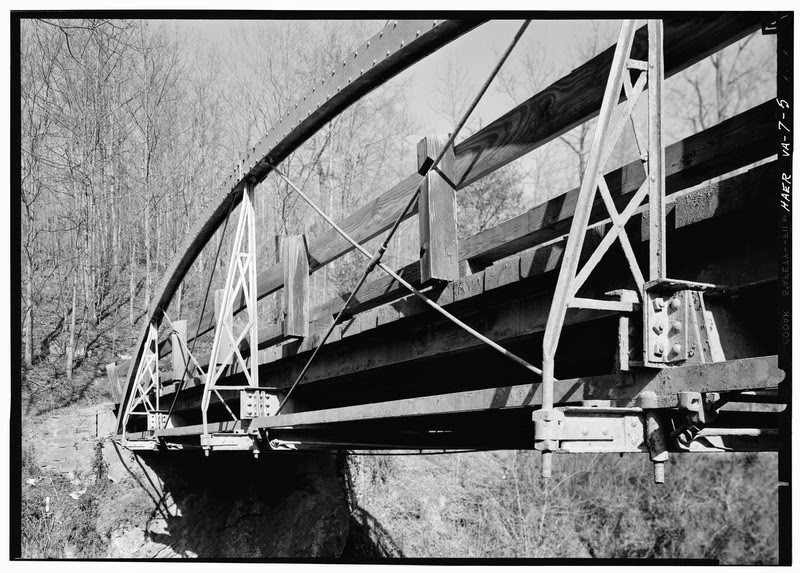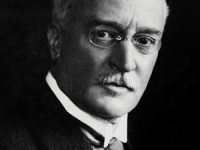
Truss Bridge patented by Squire Whipple
On September 16, 1804, US-American civil engineer Squire Whipple was born. He who provided the first scientifically based rules for bridge construction and has become known as the father of iron bridge building in America.
The Civil Engineer
Squire Whipple was born in Hardwick, Massachusetts, in 1804 the son of a farmer. He was exposed to construction sites and materials from early age, since his father designed, built and ran a cotton-spinning mill in nearby Greenwich, Massachusetts. After receiving the best common school education available he attended Hartwick Academy and Fairfield Academy located in central New York near his home. In 1830 Whipple graduated from Union College in Schenectady, New York after one year of study. He spent the decade of the 1830s serving his apprenticeship working on the Baltimore and Ohio Railroad, the Erie Canal Enlargement, the New York and Erie Railroad and several other railroads. When work was slow, he designed, built and sold mathematical instruments such as transits and engineer’s levels and drafting equipment. [1]
Iron Bridges
In the early 1840s, Whipple designed and built a weigh lock scale with a capacity of 300 tons to weigh the canal boats on the enlarged Erie Canal in Utica. This was probably the largest weighing device in the country at the time. After a while, Whipple became interested in the design and construction of iron and wooden bridges. Having worked on the enlargement of the Erie Canal, he knew that wooden bridges that crossed the original canal had a short-life. He also knew that the new, wider canal would require longer span bridges and must be made of a modern material, iron.[1,3]
A Patent on the very first Bowstring Iron Truss
His very first bowstring iron truss was patented in 1841. His patent showed an understanding of structural behavior of the diagonals and verticals and the need to size them to handle their loads as either tension or compression members. The engineer received his first chance to build a bridge across the canal at First Street in Utica fell. He tried to convince the Canal Commissioners that a bridge built of iron was a good long-term investment, but they were reluctant to trust a new material for their bridge. To illustrate the stability and strength of his bridge, Whipple had one built at his own expense on a vacant lot in Utica near the offices of the Canal commissioners. When the First Street Bridge fell, they approved the construction of his bridge.[1,2]
The Father of Structural Engineering
In 1847, he published a brochure with which static calculations for railroad bridges could be made (A work on bridge building). For this reason, he is also considered, along with Stephen Harriman Long, to be the father of structural engineering in the U.S. In 1853, he built a 146-foot span railroad bridge near West Troy in New York. For bridges with less than 200 feet of span, his designs became a model for the whole USA beyond the state of New York (especially after his arch bridge patent of 1841 expired in 1869). Cast iron was used for the non-tensile parts and wrought iron was used for other parts (as outlined by Whipple in his patent).
Squire Whipple died on March 15, 1888 in Albany, New York, at age 83.
Golden Gate Bridge Open (1937), [6]
References and Further Reading:
- [1] Squire Whipple at the Structure Magazine
- [2] Squire Whipple Website
- [3] Quire Whipple at Britannica
- [4] The Opening of the Golden Gate Bridge
- [5] Squire Whipple at Wikidata
- [6] Golden Gate Bridge Open (1937), Francisco, California, United States of America (USA), British Pathé @ youtube
- [7] Raymond W. Smith (January 1979). “National Register of Historic Places Registration: Double-Span Whipple Bowstring Truss Bridge / Shaw Bridge”. New York State Office of Parks, Recreation and Historic Preservation.
- [8] Survey number HAER NY-4 – Whipple Cast & Wrought Iron Bowstring Truss Bridge, Normans Kill Vicinity, Albany, Albany County, NY
- [9] Timeline of American Civil Engineers via DBpedia and Wikidata





